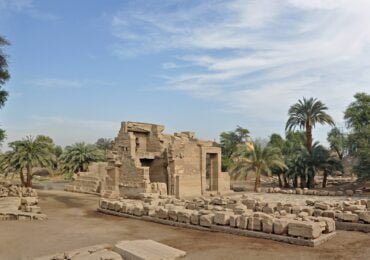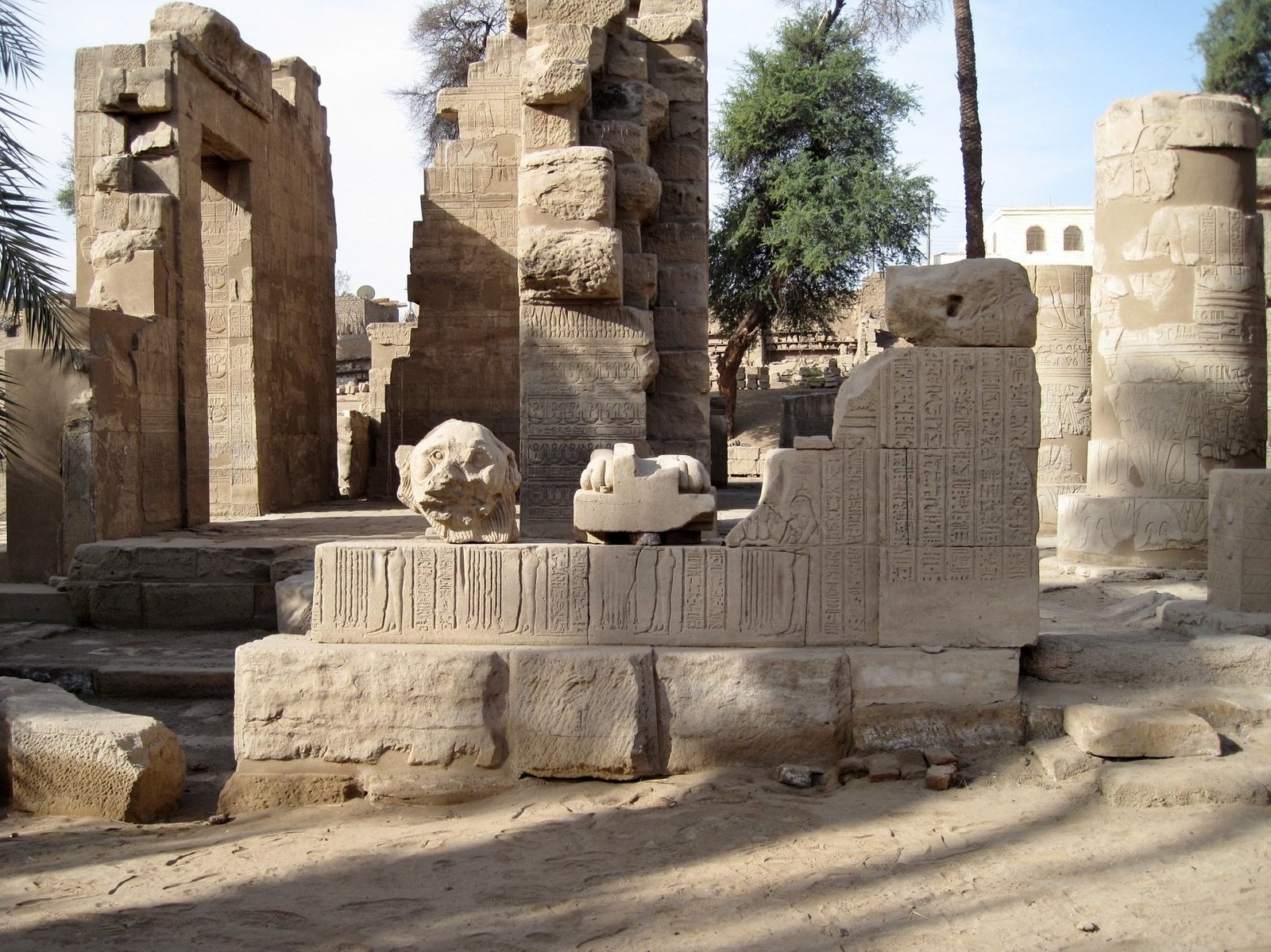El-Tod Temple is 20km (12 miles) southwest of Luxor on the east bank of the Nile. To get there, hire a taxi from Luxor and it takes about 30 minutes. Buy your entrance ticket of El-Tod Temple from the Luxor Temple in Luxor before heading there.
History of El-Tod Temple
The history of the site can be traced to the Old Kingdom Period of Egyptian history. A granite pillar of the 5th Dynasty pharaoh, Userkaf, is the oldest object found at El-Tod Temple.
A Middle Kingdom temple complex at the site was mostly dedicated to the cult of the important Egyptian god, Montu (the falcon-headed god of war). Blocks have been discovered with the names of Mentuhotep II and Mentuhotep III. Senwosret I replaced the original temple with a new one, with further additions made under Ptolemy VIII.
In 1936 a French team of archaeologists discovered four copper chests in the name of King Amenemhet II under the remains of Senwosret I’s temple. Within the chests lapis lazuli, silver, and some gold objects were found. The items seem to have originated from various parts of the world, indicating trade contacts between the Ancient Egyptians and other early civilizations. The treasure is now to be found in the Egyptian Museum in Cairo, and also in the Louvre in Paris.
The monuments at El-Tod Temple that survive today are dated to the New Kingdom and Graeco-Roman Period.
This includes a partially preserved barque shrine of Montu built by Tuthmose III and restored by Amenhotep II, Seti I, Amenmesse, and Ramesses III and Ramesses IV. It stands before a small temple built during the Graeco-Roman Periods. This is the temple that stands today, constructed originally by Ptolemy VIII Euergetes II. The temple consists of a columned court and hall with several chambers, including a hidden treasury room above the chapel on the south side of the hall. The temple was built in front of and connecting with Senwosret I’s earlier building, but only the front wall of Senwosret I’s structure remains, though it has good examples of later usurpation and reworking.

A mass jigsaw puzzle of hundreds of blocks dating from the Old Kingdom to the Greek and Roman Period can be seen lined up ready to be assembled and returned to their original positions within the monuments.
A Roman kiosk was located near the Ptolemaic temple. North of the two Ptolemaic halls there was a lake dug out, either while or shortly after the halls were built.

